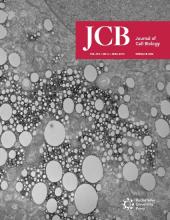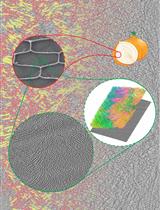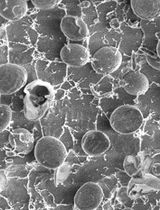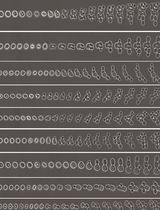- EN - English
- CN - 中文
Non-invasive Quantification of Cell Wall Porosity by Fluorescence Quenching Microscopy
细胞壁孔隙的荧光猝灭显微镜无创定量分析
发布: 2019年08月20日第9卷第16期 DOI: 10.21769/BioProtoc.3344 浏览次数: 5892
评审: Samantha E. R. DundonVikash VermaAnonymous reviewer(s)
Abstract
All bacteria, fungi and plant cells are surrounded by a cell wall. This complex network of polysaccharides and glycoproteins provides mechanical support, defines cell shape, controls cell growth and influences the exchange of substances between the cell and its surroundings. Despite its name, the cell wall is a flexible, dynamic structure. However, due to the lack of non-invasive methods to probe the structure, relatively little is known about the synthesis and dynamic remodeling of cell walls. Here, we describe a non-invasive method that quantifies a key physiological parameter of cell walls, the porosity, i.e., the size of spaces between cell wall components. This method measures the porosity-dependent decrease of the plasma membrane-localized fluorescent dye FM4-64 in the presence of the extracellular quencher Trypan blue. This method is applied to bacteria, fungi and plant cell walls to detect dynamic changes of porosity in response to environmental cues.
Keywords: Cell wall (细胞壁)Background
Bacterial, fungal and plant cells are surrounded by a cell wall which has a multitude of different functions, including, defining size and shape, and controlling the exchange of substances within the environment. A key feature of cell walls is their flexibility. Long polysaccharides form a strong network and their structure is frequently adjusted, for example to allow for cell elongation, or to counter pathogen attack. In addition, cell wall porosity allows for molecular movement between the wall’s various components. Cell wall porosity is also a reliable indicator of digestibility and saccharification efficiency of cell wall material (Himmel et al., 2007; Ding et al., 2012; Tavares et al., 2015) and has been linked to anti-fungal drug uptake (Liu et al., 2019). Current methods for measuring cell wall porosity are based on relatively invasive methods, such as transmission electron microscopy (TEM) or field-emission scanning electron microscopy (FESEM) (Sugimoto et al., 2000; Xiao et al., 2016; Zheng et al., 2017), which alter the original cell wall structure and may lead to artifacts. Another method, cryo-FESEM, is less invasive but the resolution is limited to 20 nm (Derksen et al., 2011). Pore size distributions at sub-nanometer resolution can be obtained by gas adsorption, but this method also requires harsh sample pretreatment (Adani et al., 2011). Instead of determining pore sizes directly, other methods measure the capacity for molecular movement within the wall, which can be compatible with live-cell analysis. For example, the relative porosity of yeast cell walls assesses the measuring the effect of different-sized polycations on the leakage of UV-absorbing intracellular compounds (De Nobel et al., 1990). Similarly, the effect of fluorescent quenchers with different hydrodynamic radius on the autofluorescence of lignin can be measured to gain insight on differences in porosity between wood samples (Donaldson et al., 2015).
The method presented here makes use of the ability of quenchers to diffuse through the cell wall to determine relative porosity. In contrast to the approaches described above, this method works on living cells and can be applied to all accessible tissues and all organisms. It measures the fluorescence intensity of the dye FM4-64 located at the plasma membrane in the presence of extracellular quenchers. The quenching effect has been shown to depend on cell wall porosity (Liu et al., 2019). The method has been successfully used on bacteria, fungi and plants, for example to determine changes in wall porosity during drought-induced cell elongation in the model plant Arabidopsis (Liu et al., 2019).
The method described below uses Trypan blue as a quencher. In comparison with other quenchers, Trypan blue has a higher dynamic range (Liu et al., 2019), which results in more reliable results when analyzing cell walls with low porosity. Furthermore, Trypan blue is widely available, doesn’t require co-factors and is inexpensive. The protocol for yeast cells can be quickly adapted to any other microorganism, by choosing the right culture medium and growth conditions. Similarly, the protocols for Arabidopsis roots and Maize leaf samples can be adapted to other plant species. For root samples, however, growth on agar plates is recommended instead of cultivation on soil, because it can be difficult to clean all soil particles without damaging the root surface.
Materials and Reagents
- Pipette tips
- Microscope cover slips, 50 x 20 mm and 20 x 20 mm (CITOTEST, P/N: 80340-0630, 80340-3610)
- Microscope slide (CITOTEST, P/N: 80320-2140)
- 15 ml round bottom tubes
- 10 cm glass culture dish
- 1.5 ml Centrifuge tube
- Tape
- Razor blades
- Filter paper
- Yeast (Saccharomyces cerevisiae, BY4742)
- Arabidopsis seedlings (Col-0)
- Maize (Zea mays, B73)
- FM4-64 (N-(3-Triethylammoniumpropyl)-4-(6-(4-(Diethylamino) Phenyl) Hexatrienyl) Pyridinium Dibromide) (Thermo Fisher Scientific, catalog number: T3166)
- DMSO (Dimethyl sulfoxide) (MP Biomedicals, catalog number: 196055)
- Trypan blue (Solarbio, catalog number: T8070)
- Murashige and Skoog (MS) salts (Phyto Technology Laboratories, catalog number: M519)
- Sucrose (Guangzhou Jinhuada Chemical Reagent, CAS: 57-50-1)
- Agar (Solarbio, catalog number: A8190)
- Tryptone (OXIOD, catalog number: LP0042)
- Yeast extract (OXIOD, catalog number: LP0021)
- NaCl (Guangzhou Jinhuada Chemical Reagent, CAS: 7647-14-5)
- Glucose (Guangzhou Jinhuada Chemical Reagent, CAS: 58367-01-4)
- Na2HPO4 (Guangzhou Jinhuada Chemical Reagent, CAS: 10039-32-4)
- KH2PO4 (Guangzhou Jinhuada Chemical Reagent, CAS: 7778-77-0)
- KCl (Guangzhou Jinhuada Chemical Reagent, CAS: 7447-40-7)
- KOH
- YDP medium (see Recipes)
- Half strength MS medium (see Recipes)
- PBS solution (pH 7.2-7.4) (see Recipes)
- FM4-64 stock solution (see Recipes)
- Trypan blue stock solution (see Recipes)
Equipment
- Forceps
- Scissors
- Staining jars
- Pipettes, 10, 100, 1000 μl (Thermo Scientific, models: PZ31631, PZ69795, QZ06709)
- Centrifuge (Sigma, model: 1-14)
- Analytical balance (Adam Equipment, model: PWC 124)
- Autoclave sterilizer (ZEALWAY, model: GR60DP)
- Water purification systems (Synergy, model: SYNSVHF00)
- Air clean bench (AIRTECH, model: SW-CJ-2FD)
- Shaker incubator (Nanrong, model: NRY-200)
- Plant growth chamber (NINGBO SOUTHEAST INSTRUMENT, model: GDN-1000D-4)
- Confocal fluorescence microscope (Leica, model: DMi8) with ThorLabs module (model: ThorLabs-CLS)
Note: The protocol has also been tested on fluorescence widefield microscope systems with sCMOS cameras. These can be used instead of a confocal microscope as long as a clearly focused section of plasma membrane can be visualized with high signal-to-noise ratio. - Computer (Dell, model: U2717D)
Software
- ThorImageLS 3.0 (Thorlabs)
- ImageJ 1.52n (National Institutes of Health. USA, http://imagej.nih.gov/ij) (Schindelin et al., 2012)
Procedure
文章信息
版权信息
© 2019 The Authors; exclusive licensee Bio-protocol LLC.
如何引用
Readers should cite both the Bio-protocol article and the original research article where this protocol was used:
- Liu, X., Pomorski, T. G. and Liesche, J. (2019). Non-invasive Quantification of Cell Wall Porosity by Fluorescence Quenching Microscopy. Bio-protocol 9(16): e3344. DOI: 10.21769/BioProtoc.3344.
- Liu, X., Li, J., Zhao, H., Liu, B., Günther-Pomorski, T., Chen, S. and Liesche, J. (2019). Novel tool to quantify cell wall porosity relates wall structure to cell growth and drug uptake. J Cell Biol 218(4): 1408-1421.
分类
微生物学 > 微生物细胞生物学 > 细胞成像
植物科学 > 植物细胞生物学 > 细胞壁
细胞生物学 > 细胞结构 > 细胞表面
您对这篇实验方法有问题吗?
在此处发布您的问题,我们将邀请本文作者来回答。同时,我们会将您的问题发布到Bio-protocol Exchange,以便寻求社区成员的帮助。
Share
Bluesky
X
Copy link














